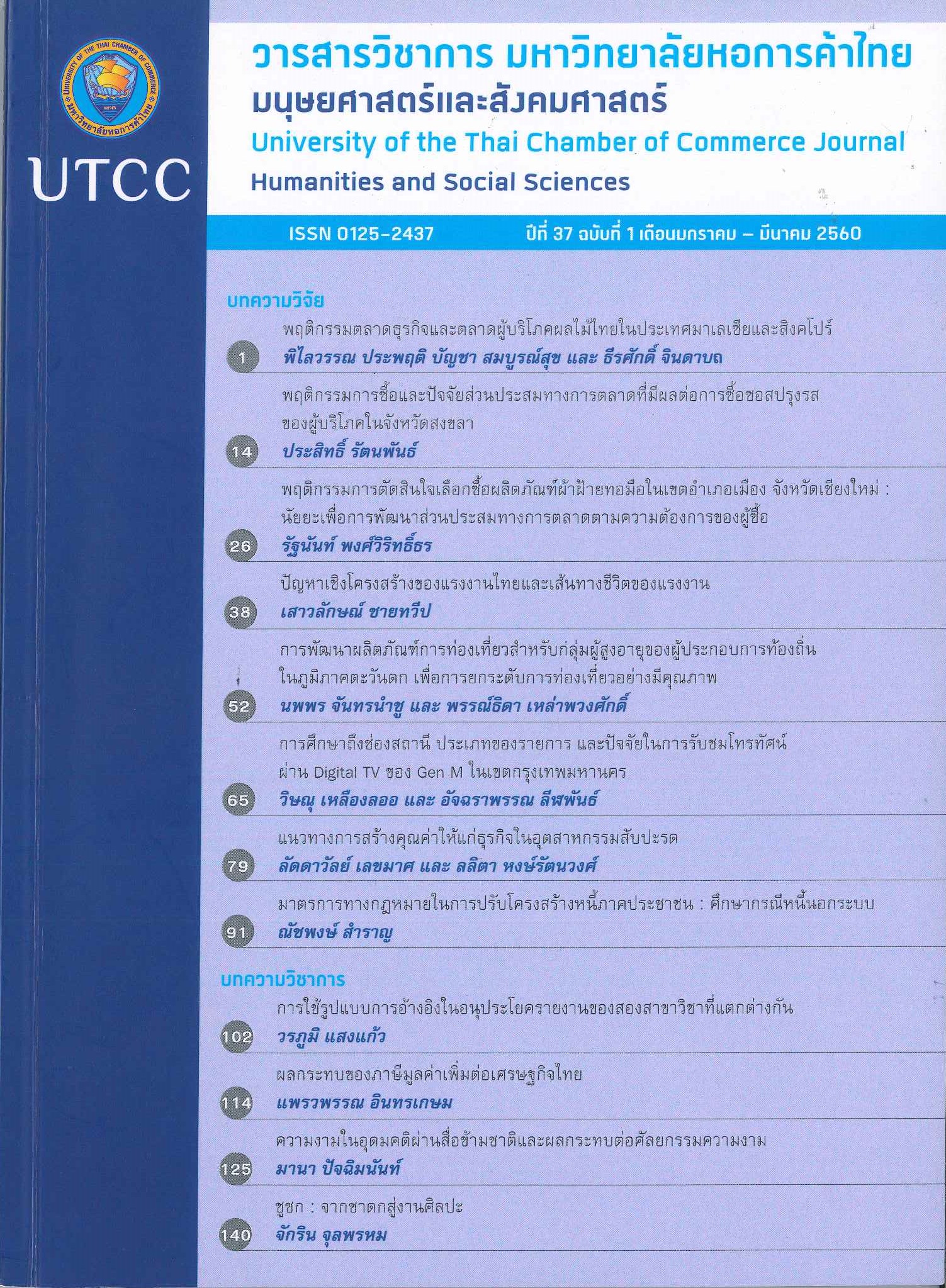Purchasing Behavior of Woven Cotton Products in Muang District, Chiang Mai Province : Implication for Marketing Mixes Based on Buyer Needs
Main Article Content
Abstract
This research aims to explore decision making and marketing mix factors that affect the purchasing behaviors of hand-woven cotton products. It also aims to present a guideline for developing marketing mix strategies of hand-woven cotton products, based on buyers’ needs in Muang District, Chiang Mai Province. Data were collected using questionnaires on a sample size of 200 buyers by convenience (accidental) sampling. Results show that customers buy no more than 2 pieces and spending between 300- 600 baht per each purchase for using in the products in special occasions. In terms of marketing mix, consumers prefer well-designed products with
price set in accordance with quality. They also prefer trade shows as a channel of distribution and desire good caretaking from sell representatives. Proposed guidelines for developing sustainability marketing mix strategies are as followed: 1. Products and packaging should be more attractive; 2. Price must be reasonable and matched quality; 3. Distribution channels should focus on the various trade shows and the booths at the trade shows should be well decorated; and 4. Promotion
should emphasize on Gift with Purchase (GWP) and products exchange policy.
Article Details
ลิขสิทธิ์ของบทความ
ผลงานที่ได้รับการตีพิมพ์ถือเป็นลิขสิทธิ์ของมหาวิทยาลัยหอการค้าไทย ห้ามมิให้นำเนื้อหา ทัศนะ หรือข้อคิดเห็นใด ๆ ของผลงานไปทำซ้ำ ดัดแปลง หรือเผยแพร่ ไม่ว่าทั้งหมดหรือบางส่วนโดยไม่ได้รับอนุญาตเป็นลายลักษณ์อักษรจากมหาวิทยาลัยหอการค้าไทยก่อน
References
Kotler, Philip. (1997). Analyzing consumer markets and buyer behavior in marketing management. Evanston, IL: Northwestern University.
Payne, Adrian. (1993). The essence of services marketing. Upper Saddle River, NJ: Prentice Hall.
Pongwiritthon, R., & Pakvipas, P. (2013). Guidelines for sustainable tribe cultural tourism development. Journal of Community Development Research, Naresuan University, 6(1), 42-59. (in Thai).
Sereerat, S. (2009). Consumer behavior. Consumer behavior. Bangkok. Thai Watana Panich. (in Thai).
Theeravanich, R. (2008).Behaviors and marketing factors affecting buying/using hand-woven cotton for clothing.Bangkok: Kasetsart University. (in Thai).
Theeravanich, R., & Sujarinphong, P. (2009).Woman behaviors on purchasing and consuming hand woven cotton as garments Bangkok: Kasetsart University. (in Thai).
Waithayawongsakul, P. (2013). Accounting for the community as a factual advancement to sustainability based on the concept of sufficiency economy. University of the
Thai Chamber of Commerce Journal, 33(1), 152-170. (in Thai)
Wiruchnipawan, W. (2012). Sufficiency economy in administration management for community. Retrieved August 20, 2016,from https://www.wiruch.com/articles (in Thai).
Yanaso, K. (2019).Factors affecting consumers’ decisions in buying finished products made from hand woven cotton in Chiang Mai Province. Chiang Mai: Chiang Mai University. (in Thai).


